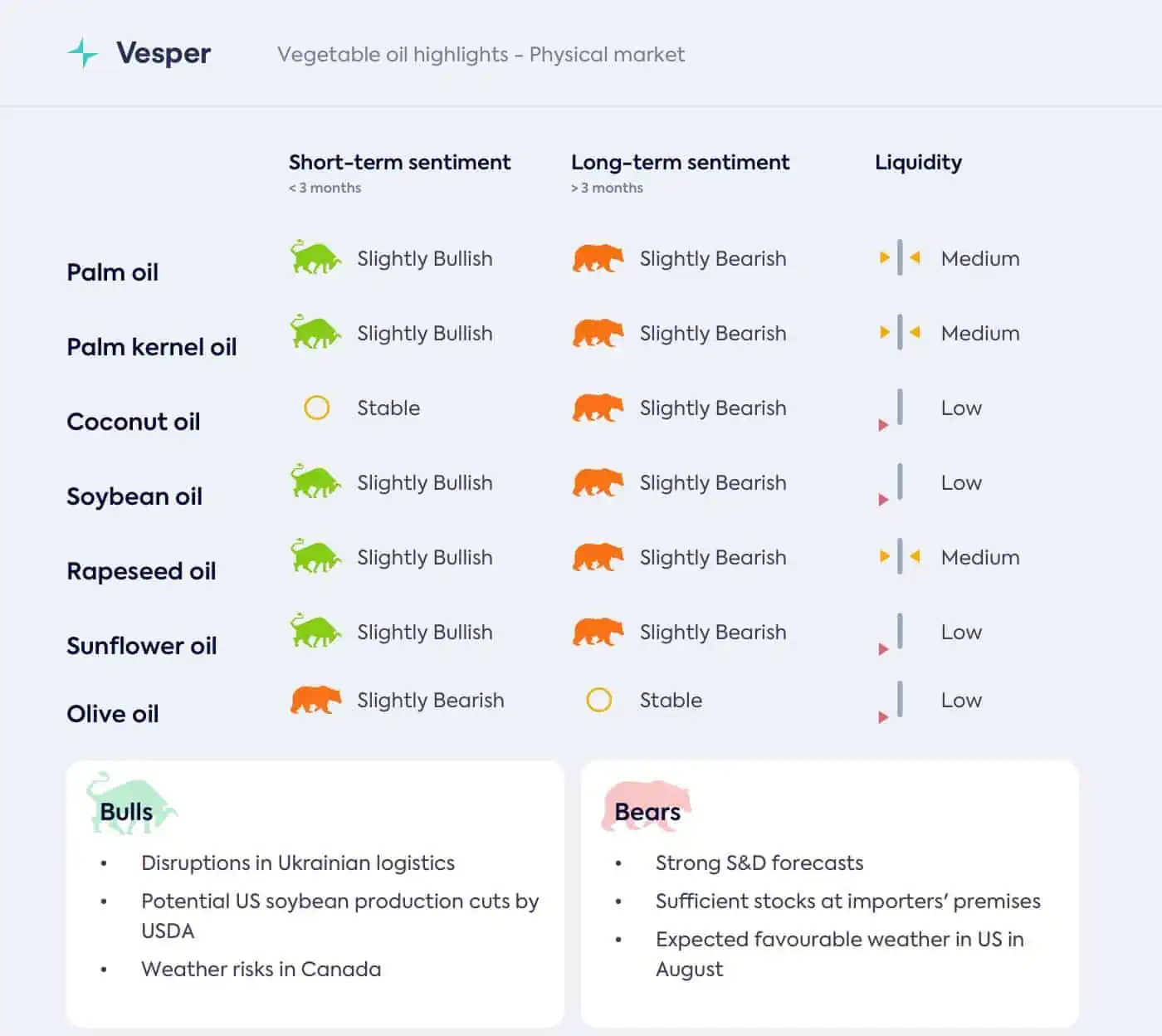Recent movements in the vegetable oil market have showcased diverse trajectories. Palm oil prices experienced a decline driven by elevated Malaysian supply and sluggish export figures. Similarly, soybean oil prices witnessed a decrease this week, attributed to favorable weather conditions in the US and a better-than-anticipated enhancement in weekly condition ratings for soybeans. Sunflower oil also faced a dip due to subdued demand from various destinations.
On a contrasting note, rapeseed, olive, and coconut oils all saw an upward shift. The strengthening of rapeseed oil prices can be attributed to heightened Chinese demand for rapeseed, delayed European harvests, apprehensions regarding Canadian and European yields, and escalating tensions in the Black Sea region. Meanwhile, olive oil registered an increase following the Turkish export embargo on the product.
In a broader economic context, Fitch, the renowned rating agency, recently revised the credit rating of the United States from AAA to AA+. This change was attributed to projected fiscal deterioration over the next three years and the recurrent eleventh-hour debt ceiling negotiations that pose a risk to the government’s ability to meet its financial commitments. The macroeconomic landscape has cast an impact on the edible oil complex, a consequence of the US debt market downgrade by Fitch. Sandeep Singh, Director of The Farm Trade, a Kuala Lumpur-based consulting and trading firm, highlighted this influence.
Small FYI: Feel at liberty to use our Vegetable Oils calculators, which are open for use at no cost, to for instance compute the refinery cost for crude vegetable oil.
As the vegetable oil market continues to navigate through a range of factors, including supply dynamics, global demand, and geopolitical tensions, staying attuned to these shifts will be crucial for industry participants and stakeholders alike.
Want to read the full market analyses? Start you Vesper trial here.






